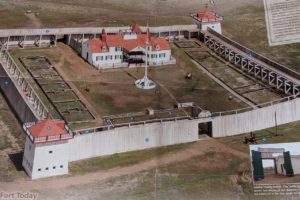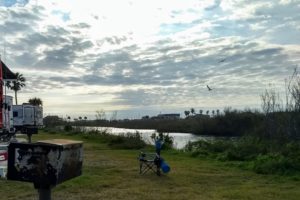The town of Blakeley originally was a riverside trading center founded in 1814. At its height, it was one of Alabama’s largest cities; today all that remains is glimpses and suggestions. The earliest inhabitants were a native group from Florida called the Apalachees who established a village here. Later, British and Spanish colonial era settlers farmed the property before it came under American control after the War of 1812. Let’s take a look first at what would have been the town in the first third of the 1800s.


We’ll learn more about the history of this town later in this post, but first let’s look at what was here back in the early 1800s.





Before this building was constructed, court sessions and other county business were conducted in several locations within the town of Blakely.
While the courthouse was authorized in 1820, it wasn’t built until around 1833. This 2-story brick building had a jail on the bottom floor with office space on the upper floor. It served as the seat of county government until 1868 when officials named nearby Daphne the county seat.

The following map was produced during the Civil War and shows the location of the Courthouse in relation to other structures at the time.


commercial businesses



Founders saw this town as a regional center for commerce because of its strategic location. By water, the town provided access to the entirety of the Tombigbee and Alabama River systems. By road, it was the end of the roads leading east to Pensacola and north to the heart of Alabama’s prime agricultural regions. Many of the early residents came here to take advantage of this location. By the early 1820s, some 25 merchants were operating in the developing town, offering everything from hardware to groceries.



houses
Whenever I see homes built in the early 1800s, I’m shocked at how modern looking they are. These people knew how to build homes for themselves.
The framework of the Mott House in the following picture is named in honor of Gabriel F. Mott, the publisher of The Blakeley Sun and Alabama Advertiser and owner of a local printing office.



The interior space of such homes would probably have asymmetrical, rectangular rooms. The floorplan known as “Hall and Parlor” was common in colonial-era dwellings and stayed popular as a home style into the 1800s. The larger space would be a living room and the smaller areas would be bedrooms.
other houses in Blakeley



The current style of time was a Federal design and many of the town’s residents would have been from New England states where the style was popular. Adaptions for the hot, rainy weather probably included wide galleries and steeply pitched roofs.




So what is a creole cottage architecture style? Here’s some information from Wikipedia.
“Two features of this style of house are thought to be influences from other places in France’s former colonial empire. The full front porch is believed to originate from the Caribbean islands, while the high gabled roof, the ridge of which is parallel to the street, accommodating the porch as well as the mass of the house, is thought to be of French Canadian origin. In the earlier or more fundamental examples one or two main rooms may open directly onto the porch. They often feature an interior chimney that pierces the ridge line of the roof, with back-to-back fireplaces serving two rooms. Two common secondary characteristics of this style are a raised basement and the frequent situating of the front of the buildings at the property line.”
pavilion

In a nearby town, the Swedish Evangelistic Mission Congregation built its church in 1903, and its members served the community for almost 75 years. When the community built a new church in the late 1970s, Historic Blakeley State Park founder Mary Grice worked with the church leaders to have the old church structure moved here.

However, while moving the structure, an accident resulted in irreparable damage to the building. This pavilion was designed and built to accommodate and preserve the steeple.
town’s history
Now that we know a little of what the town would have looked like, let’s look at its history.

Blakeley was named for Connecticut native Josiah Blakeley who planned the town on a tract of land he purchased from an early settler. Blakeley had settled in Mobile around 1806 when the area was still under Spanish control, and he was able to buy several thousand acres of property in the delta region.

While the town was formally incorporated in January 1814, Josiah Blakeley died in 1815 before he could see his dreams fulfilled.
rise and fall
In 1817, the Mississippi Territory was divided into the state of Mississippi and the Alabama Territory. When Alabama became a state in 1819, Blakeley had a population growth. At least 2000 people lived in or around town by the mid-1820s, about the same size as Mobile. The seat of government for Baldwin County was here in 1820, and for the next 2 years it was designated an official port of entry for the United States.

A couple of factors led to Blakeley’s decline. First, real estate prices soared because of speculation by investors and navigational improvements that had been made to the Mobile harbor and few could afford to move here.
Second, the environmental setting that gave Blakeley its early prosperity also spelled its doom. The swamps of the Mobile-Tensaw Delta filled with mosquitoes spread deadly epidemics of yellow fever and malaria. Massive epidemics swept the antebellum town, killings scores of residents and driving others from the lowlands.
Residents of the time didn’t know the source of such fevers and blamed them on the “bad air” of the vast wetlands. Once the true cause was discovered, malaria and yellow fever were virtually eradicated, but by then the town of Blakeley had been reclaimed by the forest.

The community remained the county seat for Baldwin County until the 1860s even though it was effectively a ghost town by the 1840s.
hanging tree

earlier inhabitants
The site of Blakeley had seen important settlements for thousands of years. Native Americans settled here more than 4000 years ago to hunt, fish, and gather food from the rich delta. The early Native Americans gave way to French settlers who lived here after Mobile was founded.
The Christian Apalachee, a Native American group that converted to Catholicism, came here after the British-led Creeks destroyed their mission villages in Florida.

This powerful tribe traced its ancestry back to the prehistoric peoples that occupied what is now northern Florida and southern Georgia. In the 1600s, they allowed Spanish priests to establish missions in their towns and many converted. During Queen Anne’s War (1702-13), fought between Britain, France, and Spain for control of the North American continent, raids by the British and their Native American allies severely disrupted life in Apalachee communities.
In a series of raids known collectively as the “Apalachee Massacre,” British-led forces destroyed several towns, killed hundreds, and enslaved over 1000 people. Survivors fled northern Florida in 1704 and 1705. French officials at Mobile encouraged Apalachees from modern-day Pensacola to settle in Mobile Bay area. Villages were established north of Mobile and here at what became Blakeley.

The Apalachees’ legacy survives in the form of place names, including the nearby Apalachee River. Bayou Salome that runs through the park and empties into the Tensaw River just north of where we are is named in honor of the wife of a chief of the Apalachees in the mid-1700s.
The Apalachees played an important part of life in the Mobile area. As practicing Catholics, they had their own chapel and priest, participated in St. Louis Day celebrations, and the baptism of their children was recorded in the local diocese registers.
What is the St. Louis Day celebration? It’s the feast day of their patron saint, St. Louis IX of France, that started in Texas and is still celebrated today. I couldn’t find out how this celebration got to Mobile Bay area.

delta info

The delta has thousands of acres of open water consisting of rivers, creeks, bayous, and lakes. Also in the delta are marshes, swamps, grass beds, and forests.

Mobile Bay
Just next to where the Apalachees had their most recent village is the entrance to Mobile Bay.




Now that we know about the town that’s no longer a town, let’s look at why this location was so important at the end of the Civil War.




